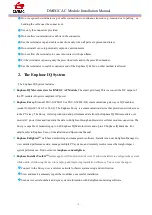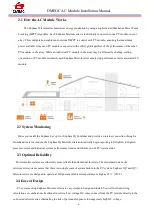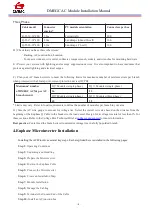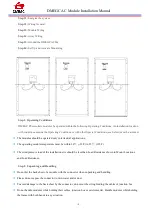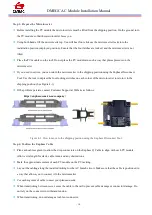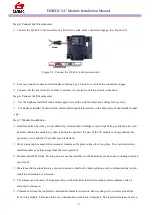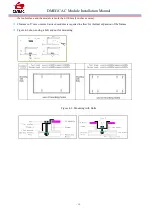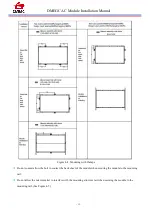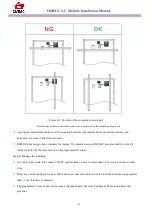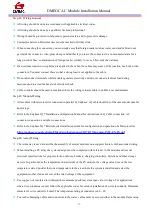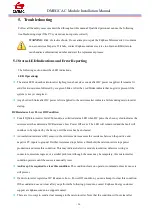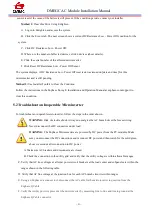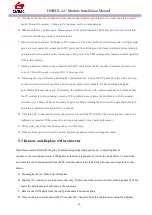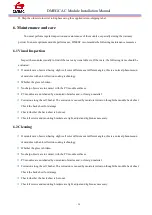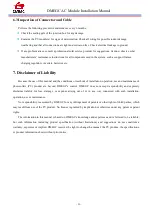
DMEGC AC Module Installation Manual
- 17 -
Step 12: Wiring General
All wiring should be done in accordance with applicable electrical codes.
All wiring should be done by a qualified, licensed professional.
Wiring should be protected to help ensure personal safety and to prevent its damage.
Connectors between Microinverters must be inserted until they click.
When connecting the connectors, you must make sure that foreign matter such as water, sand and debris do not
get inside the connector. Also, please keep in mind that if you leave the connector in a nonconnected state for a
long period of time, contamination of foreign matter is likely to occur. This voids the warranty.
If an extreme tension or weight load is applied to the cable, the cables may come off the junction box body or the
connectors. You must connect these so that a strong load is not applied to the cable.
Do not disconnect terminals while modules generate electricity and do not connect electrical load during
disconnection to avoid the hazard of electrical shock.
Cable conduits should be used in locations where the wiring is inaccessible to children or small animals.
Step 13: Module Wiring
All modules with microinverter connected in parallel by Enphase
’
s Q cable should be of the same model number
and/or type.
Refer to the Enphase IQ 7 Installation and Operation Manual for instructions on Q Cable connection, AC
connector connection, and other connections.
Refer to the Enphase IQ 7 Microinverter Installation Guide for configuration and operation of a Microinverter.
https://enphase.com/sites/default/files/downloads/support/IQ7-IQ7plus-man-INTL-EN-EN.pdf
Step 14: Array Wiring
The term array is used to describe the assembly of several modules on a support structure with associated wiring.
When installing a PV array, the system design must be completed with reference to the module and inverter
electrical specifications for proper selection of fuses, breakers, charging controllers, batteries and other storage
devices. In particular, as the temperature characteristic of the PV module, the voltage value rises on the low
temperature side. Consider the lowest temperature in the area where the system is installed and select the
equipment so that it does not exceed the rated voltage of the equipment.
Use copper wire insulated to withstand the maximum possible system open circuit voltage. For applications
where wire conduits are used, follow the applicable codes for outdoor installation of wires in conduits. Minimum
diameter of wire conduit is 4 mm2. The temperature rating of conductor is 40 ~ 90.
To avoid submerging cables and connectors in the water, cables must be secured either to the module frame using



